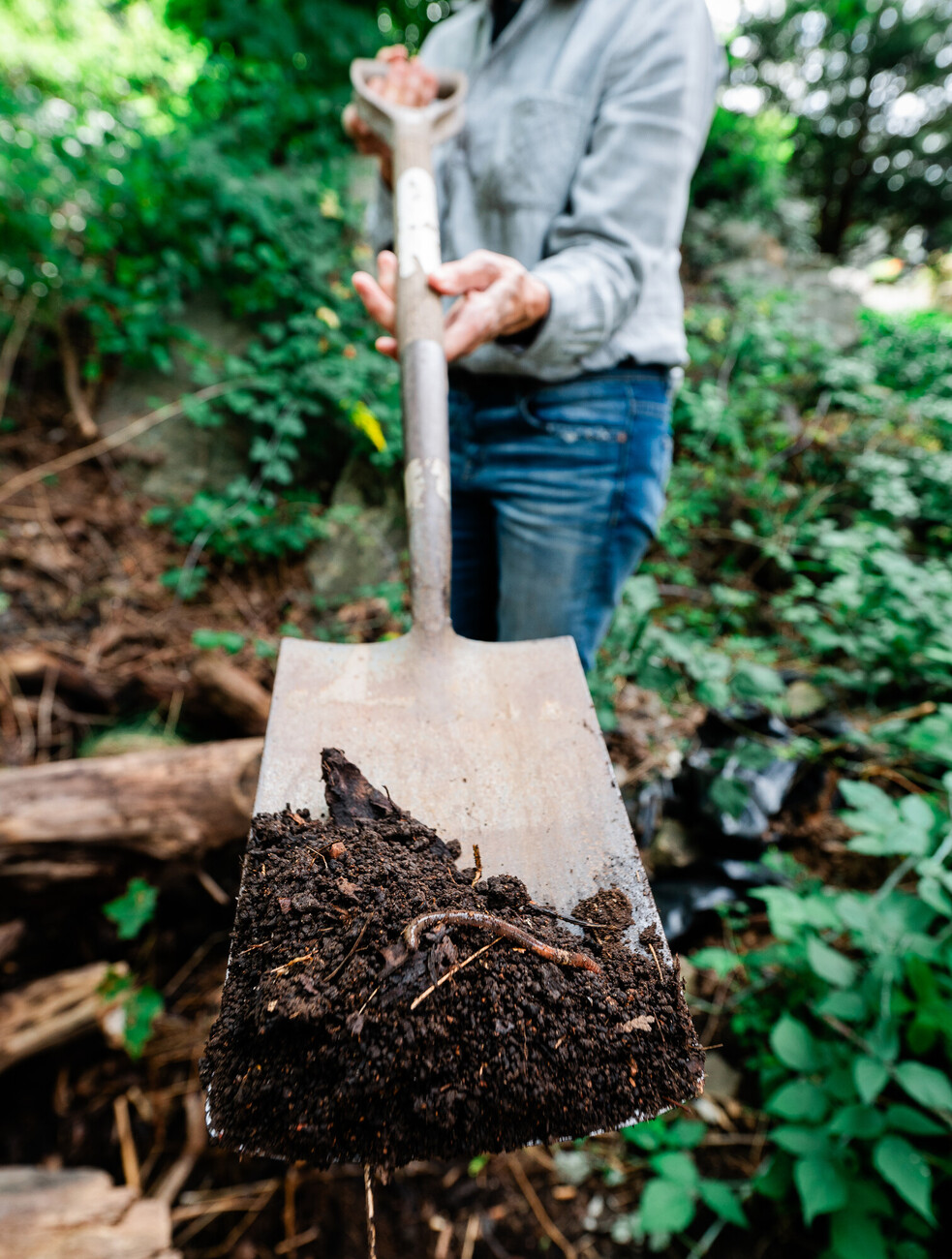An invasive and slimy invertebrate is wreaking havoc among the soil for gardeners in town, and may also be contributing to the disruption of entire ecosystems in the area.
The Asian jumping worm is a fairly new invasive species to the United States, but is spreading quickly across the country. Now, it has hit Marblehead. The worms, which can measure in length from 1.5 to 8 inches long, aren’t just an issue because they are an unpleasant sight, but they are actually damaging and disrupting the ecosystem around them.
According to an information page dedicated to the worms on Cornell University’s website, they can be found on the soil surface and leaf litter, eating up the nutrients in the ground needed for plants to thrive. The lack of nutrition in the area then works its way up the food chain to larger animals.
The worm can be identified by a thick, white ring near the top of its head.
“Asian jumping worms devour organic matter more rapidly than their European counterparts, stripping the forest of the layer critical for seedlings and wildflowers,” the article reads.
The worms also reproduce at a high rate, infesting soils in large groups. When an infestation occurs, the soil will turn into a coffee-ground-like texture as a result of worm castings.
The Cornell article also states that the worms can “severely damage” roots of plants in nurseries, gardens, forests, and even turf, and can also spread invasive plant species through soil distribution.
Marblehead resident Damaris Berner discovered she had an infestation in her yard just a few weeks ago, and pulled up roughly a dozen worms in just a few minutes during an interview.
“Anything that has the word invasive with it is very detrimental to the environment,” Berner said. “I just find them disgusting and they’re disgusting to deal with and to come across.”
Berner said one of her concerns is that she is unknowingly spreading the worm cocoons, which are about the size of mustard seeds. Adult jumping worm life cycles are short, with the worms dying off at the first freeze. However, each adult can produce many cocoons, which survive in the winter and hatch when the temperature reaches 50 degrees Fahrenheit. Because the cocoons are nearly invisible to the human eye and are covered in dirt, they can be spread easily through potted plants, landscaping equipment, mulch, tires, and footwear.
“We just don’t know how serious it will get,” Berner said. “I think it’s kind of just beginning.”
The problems created by this troublesome worm stretch beyond just a few plants being ruined in a garden, however. If enough worms are present in an area, specifically in forests, they can bring down the population of native plants, soil invertebrates, salamanders, birds, and other animals.
Another major problem? There are currently no viable control options or methods for jumping worms.
There are, however, ways that their spread can be prevented or slowed. Cornell advises against buying jumping worms for bait, vermicomposting, or gardening. It also recommends using a reputable producer with material heat treated to a temperature of 130 degrees Fahrenheit for at least three days when buying mulch or compost. This allows for the cocoons to be destroyed by applying high heat.
One of Berner’s neighbors and avid gardener, Jim Zisson, said that he has noticed the worms in his gardens for a few years now, and uses a few methods to get rid of them. Zisson grows a number of vegetables in his yard and in the fall, he said he turns his beds over, which allows for the birds in the area to get to the worms.
“I just rake the leaves away out of my other beds because they tend to congregate in that area,” Zisson said.
“Unfortunately, I think they’re the biggest problems in forested areas. I think that’s potentially the bigger problem that people are worried about, that they’ll degrade all the leaf litter and so forth,” he added.
There is also a test that can be done to see if you have jumping worms in your garden or yard using a mustard pour. Take a third of a cup of ground yellow mustard seed and mix it with a gallon of water. Slowly pour it into the soil, and if your yard is infested, the worms will come to the surface, where they can easily be removed. The mixture creates a stinging irritation on their skin, thus driving them up through the soil to escape the sensation.
The worms can also be hand picked from the soil, placed in plastic bags, and thrown in the trash.
Though he is not overly concerned about them yet, Zisson said it will be important to watch to see if the invasive species is indeed beginning to alter the chemistry and structure of nearby ecosystems, both in Marblehead and across the region.
“I’m just kind of interested to see how they fit in. I’m not personally too worried about them yet because I only see them occasionally, but it’s something to keep our eyes on,” he said.

